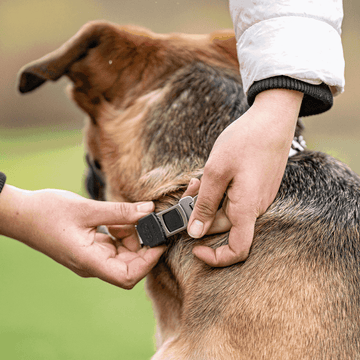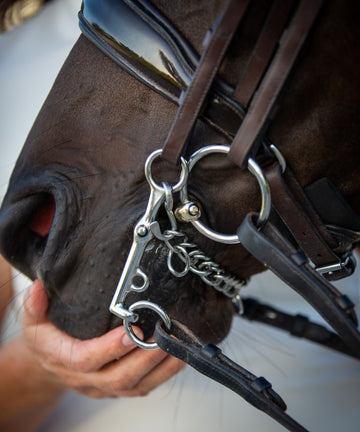The training prong collar, sometimes referred to as a "pinch collar", is a beloved training tool by many that unfortunately has been shadowed by misinformation and regulation changes in recent years. While Germany chose to ban the use of prong collar education & training in 2002, the prong collar continues to be a popular and largely supported training tool in other countries such as the USA for use in military, law enforcement, and general training. With the rise of social media and misinformation on the design & function of prong collars, we hope to be able to de-bunk the falsities so you can make the best choice for your own dogs.
Why use a prong collar?
Prong collars were designed with training in mind, and we emphasis that proper knowledge and use is paramount when choosing to incorporate one into your dog's current program. One common reason many dog owners turn to the use of prong collars is to aid in the correction of dogs with the tendency to pull or have other adverse behavior while on leash. Training prong collars provide clear signals that are well understood by the dog, especially for leash training, obedience training, or for controlling aggressive behavior.
When used and fit correctly, training prong collars should never cause pain to the dog!
In addition, breathing is not restricted when used correctly. Herm Sprenger prong collars, such as the Herm Sprenger ULTRA PLUS training dog prong collar with center plate and ClickLock, are made to a particularly high standard and the individual prongs are distinctly rounded so as no sharp edges can come into contact with your dog and cause injury.
Training prong collars can often be used as a temporary aid for correcting unwanted behavior. As with any piece of training equipment, it is not designed for wear outside of training. Prong collars are designed so that when an owner or trainer imposes a correction, the individual prongs simulate a "nip", such as the dog would receive from pack member to signal the behavior is not wanted or accepted. The short, quick signals ensure effective correction, allowing for instant reaction to misbehavior, while offering a just as quick release to "reward" the dog for changing their behavior.
A Traditional Prong Collar Alternative: The NeckTech Sport
Sometimes the appearance of a traditional prong collar can be off-putting to those who are new to the training tool or are unsure of the design and function. Our NeckTech Sport collar is a great alternative that offers a similar design and correction with more of a traditional flat collar look. The NeckTech Sport's prong design is closely modeled off of the fangs of dogs, therefore offering a natural, clear communication that is understood by your dog. By offering a correction that mimics the natural instincts of dogs, it allows for a more harmonious & straightforward training system. This style of collar works great on dogs of all coat types and appears as a traditional flat collar to outside view. Please note; if the appearance of our traditional prong collars is the only factor dissuading you from using one, we do make removable covers to offer a flat collar look for them as well.
The Do's and Don'ts of Prong Collar Use
First and foremost, we highly recommend that if you are a first time prong collar user, that you consult with a certified trainer in your area to ensure proper practice when integrating one into your dog's current training program. Our prong collars are designed to be highly customizable when it comes to fit. While each wire gauge comes in a set "starting length", we sell additional links in order to lengthen a collar if it is needed for correct fit. It is important to choose the correct wire gauge size based on your dog's weight and adjust your collar's length as needed. We have a great guide to assist with choosing the correct wire gauge below:
Additionally, we encourage the use of a flat collar alongside your training prong collar as a safety precaution. You can utilize a safety clip or coupling strap to connect them so that in the rare case that your dog becomes loose from their prong collar, they can still be controlled via their flat collar.
So, why are prong collars banned in certain countries?
In many countries, the use of prong collars or prong collars is becoming increasingly regulated. In Germany, for example, their use is banned, while in some neighboring countries they are still widely used. Germany is an example of a country that has largely turned towards the strict use of positive reinforcement only training and does not categorize the prong collar as a training tool that falls under this style of training. Unfortunately, there is a lot of misinformation on prong collars, which has not been helped by "bad apples" who have used the collar incorrectly. We are fervent supporters of proper training & use of our collars, but also understand that the use of a prong collar in training may not be the best route for every dog.
The use of prong collars in the training of 'Schutzhunde', is not uncommon, especially among military and law enforcement. Prior to the ban in Germany, law enforcement and military did utilize these collars in their training programs. In the US, on the other hand, the use of training prong collars is much more common & widely accepted by not only law enforcement/military, but also certified trainers assisting with family dogs. With widespread education, de-bunking of myths, as well as access to proper training, a prong collar can be an incredibly useful tool when training your dog!




